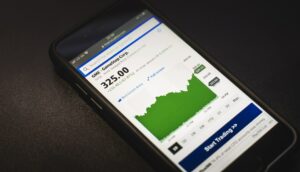Analyzing IQD Forex Market Trends: What to Look for When Trading Iraqi Dinar
The Iraqi Dinar (IQD) has been a popular currency among forex traders due to its potential for high volatility and potential profitability. However, trading the IQD requires a deep understanding of the market trends and factors that influence its value. In this article, we will explore the key aspects to consider when analyzing IQD forex market trends.
1. Political Stability:
One of the most crucial factors that determine the value of the Iraqi Dinar is the political stability of Iraq. The country has been facing significant challenges, including conflicts, political unrest, and economic instability. Therefore, it is essential to closely monitor the political situation in Iraq and its impact on the value of the IQD. Any signs of political stability or instability can greatly influence the forex market trends.
2. Economic Indicators:
Economic indicators play a vital role in understanding the state of a country’s economy and its currency value. When trading the IQD, it is important to analyze key economic indicators such as GDP growth, inflation rates, unemployment rates, and trade balances. Positive economic indicators can lead to a strengthening of the IQD, whereas negative indicators can result in its depreciation. Keeping a close eye on these indicators can help traders identify potential trading opportunities.
3. Oil Prices:
Iraq is one of the largest oil producers in the world, and its economy heavily relies on oil exports. Therefore, monitoring global oil prices is crucial when trading the IQD. Oil prices have a direct impact on Iraq’s revenue and its ability to stabilize its currency. A rise in oil prices can lead to an increase in the value of the IQD, while a decline can result in its depreciation. Traders should consider the correlation between oil prices and the IQD and use this information to make informed trading decisions.
4. Central Bank Policies:
The Central Bank of Iraq (CBI) plays a significant role in maintaining the stability of the IQD. Traders must closely follow the central bank’s policies, including interest rate decisions, foreign currency reserves, and interventions in the forex market. Central bank policies can greatly impact the value of the IQD and create trading opportunities. For instance, if the CBI decides to devalue the currency to boost exports, traders can anticipate a potential downtrend in the IQD and take advantage of short-selling opportunities.
5. Geopolitical Factors:
Iraq is located in a volatile region, surrounded by countries that have their own political and economic challenges. Geopolitical factors, such as regional conflicts, tensions, or diplomatic relations, can significantly influence the value of the IQD. Traders should stay informed about the geopolitical developments in the region to understand the potential impact on the currency market.
6. Technical Analysis:
In addition to fundamental analysis, traders should also employ technical analysis techniques when trading the IQD. Technical analysis involves analyzing historical price data, chart patterns, and indicators to predict future price movements. Traders can use various technical indicators such as moving averages, RSI, and MACD to identify trends, support and resistance levels, and potential entry and exit points. Combining technical analysis with fundamental analysis can provide a comprehensive understanding of the IQD forex market trends.
In conclusion, trading the IQD requires a thorough analysis of political stability, economic indicators, oil prices, central bank policies, geopolitical factors, and technical analysis. By keeping a close eye on these factors, forex traders can make informed decisions and capitalize on potential trading opportunities. However, it is important to remember that forex trading is inherently risky, and traders should always use proper risk management strategies to protect their capital.






